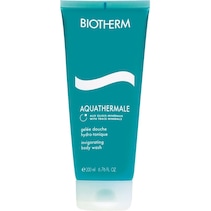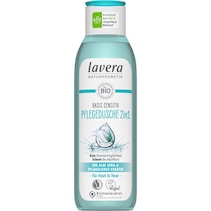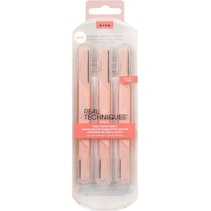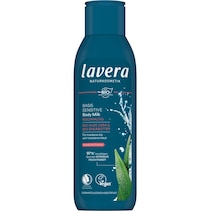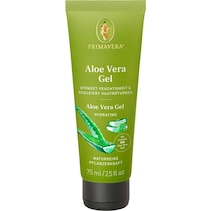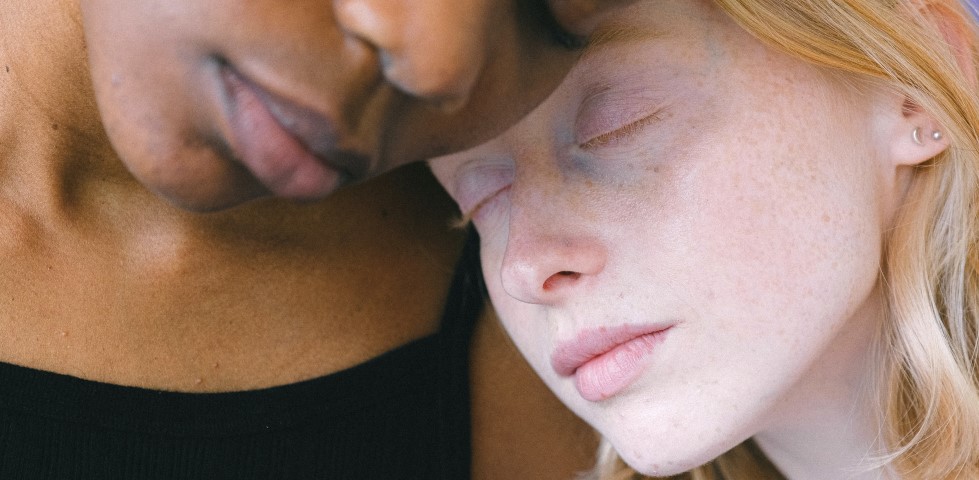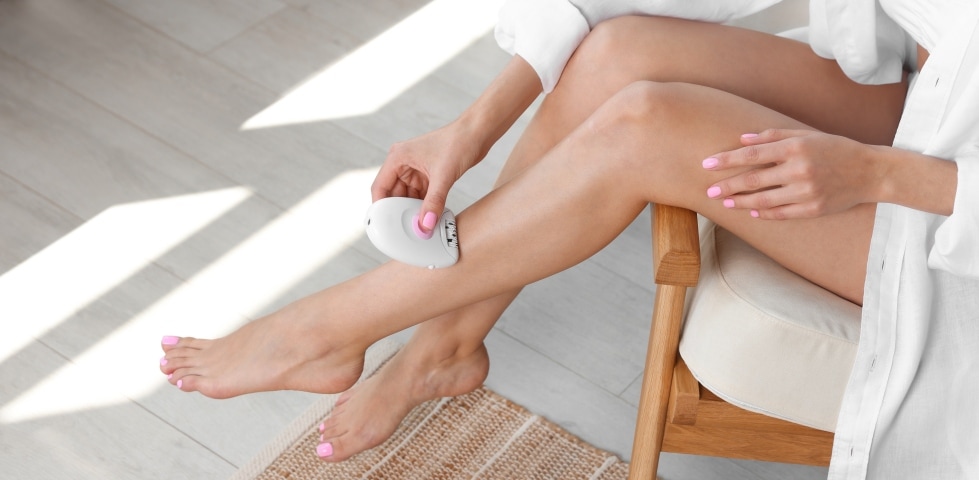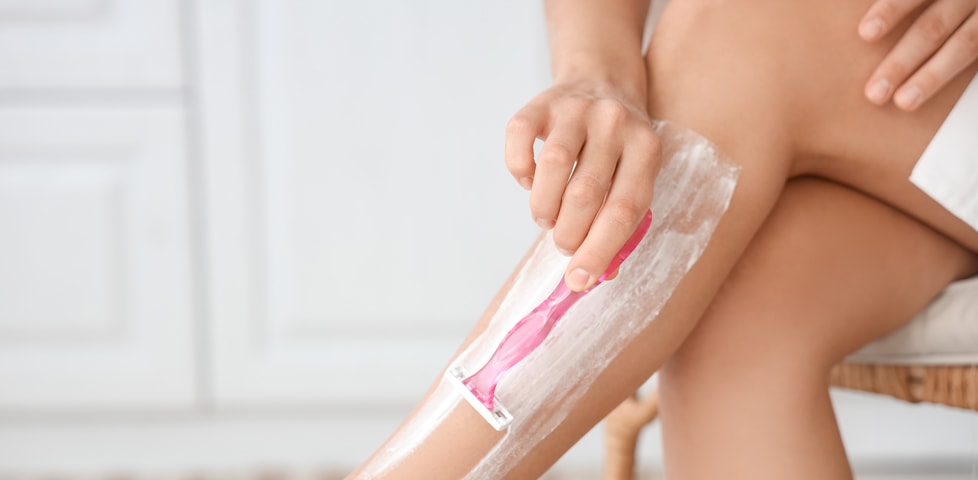
Razor burn: how to prevent it
Freshly shaved skin feels great. But just a few hours later, you may experience burning or itchy redness and even small pimples. Sounds like a clear case of razor burn – ouch. But how does it happen and how can you avoid it? Our blog post reveals how razor burn occurs, what you can do about it and how you can avoid this unpleasant irritation in the future.
10 October 2024 • 4 min. reading time
Table of contents
What is razor burn and how does it occur?
Razor burn is a phenomenon that can affect anyone. Whether it’s the intimate area, legs or upper lip: your once-smooth skin turns into a burning, red spot within a few hours. In principle, any part of the body that comes into contact with a blade can be affected. However, the intimate area is usually the most common place to suffer from razor burn. This is particularly painful because the penetrating itch can be especially unpleasant there. In addition, small red pustules can form. This also quickly ruins the well-groomed appearance of a clean-shaven area.
The reason for razor burn is the scraping blade. This is because the blade also removes the protective layer of skin. Microscopically small injuries to the skin occur. The affected area of skin becomes more sensitive to friction and other influences. In addition, dirt, bacteria and sebum can accumulate there more easily. The consequence: the skin defends itself with inflammatory processes that cause the itching and burning. Remember: the more delicate the skin, the more likely razor burn is to occur. Ingrown hairs can be another cause. In this case, an individual hair that has been cut curls under the skin instead of growing outwards as it should.
Only in very rare cases can more severe inflammations develop, which a doctor should look at. As a rule, razor on the legs or in the bikini area is annoying but harmless. The discomfort will go away on its own within a few days. You wish you could have avoided it to begin with? The good news: razor burn can be avoided.
How to prevent razor burn: 10 tips for smooth skin
When it comes to how to prevent razor burn, you should take a close look at your shaving routine. This will make the procedure a little more comfortable for your skin and reduce the need for it to react so strongly:
#1: Prepare your skin for shaving
The right preparation is half the battle when it comes to avoiding razor burn. Before you make initial contact with the blade, wash the area with a gentle cleanser and rinse thoroughly with lukewarm water. This will help the hairs to swell up and make them easier to shave. Do you often suffer from ingrown hairs? Peeling in preparation for shaving will rid the skin of debris and thus help the hair to grow out straight.
Cleansing
Cleansing
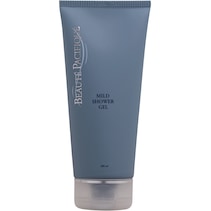
Beauté Pacifique
Body care
Body, hair & sun care
Mild Shower Gel

€ 33.95 € 30.56
- € 25.46
- € 22.92
- € 33.95
- € 30.56
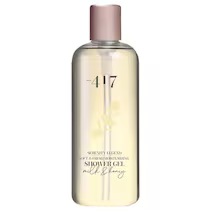
-417
Serenity Legend
Body care
Soft & Fresh Moisturizing Shower Gel
Milk & Honey

€ 20.67 € 18.60
- € 15.50
- € 13.95
- € 20.67
- € 18.60

Oceanwell
Biomarine Cellsupport
Skin care
Pure Cleanser

€ 30.10 € 27.09
- € 22.58
- € 20.32
- € 30.10
- € 27.09
#2: How to prevent razor burn – pay attention to hygiene
Germs are one of the main causes of razor burn, both on the legs and anywhere else. So make sure the blade is sharp and clean before you start. Towels should also be freshly washed to avoid cross-contamination. Want to be extra safe? Disinfect your razor before using it.
#3: Ensure a smooth glide
Whether you use shaving cream, foam or gel, the decision is ultimately a matter of taste. But all these products allow the blade to glide smoothly over the skin. This results in less friction, and the stratum corneum suffers less from the process. Moisturising additives provide additional care for the skin, making it significantly less susceptible to razor burn.
#4: Use a fresh razor blade
Worn or blunt blades don’t cut the hair, they tear it out. You can imagine how much that irritates your skin. The sharper the blade, the smoother the shave. It may sound counter-intuitive, but it helps significantly to prevent razor burn.
Shaver
Shaver
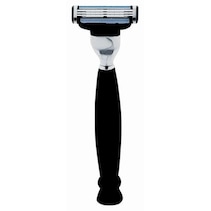
ERBE
Shaver
Shaving Shop
Gillette Mach 3 razor

€ 59.07 € 53.16
- € 44.30
- € 39.87
- € 59.07
- € 53.16
#5: The perfect pressure
Once again: less is more. If you apply too much pressure, the blade won’t glide as smoothly and will remove more of the hornier layer of skin than necessary. A sharp razor only needs a little pressure to cut the hairs precisely.
#6: How to prevent razor burn: shave with the grain
A simple tip that can work wonders against razor burn. Because when shaving against the grain, you always pull a little bit of skin with the hair. This may not be noticeable, but it can cause the microscopic injuries that you actually want to avoid.
#7: Cold water soothes stressed skin
The final cooling rinse ensures that the blood vessels contract. The skin surface is properly sealed. Small wounds are closed up and bacteria can no longer get in.
#8: Dab instead of rub
Treat the freshly shaved area as gently as possible. Use a soft towel and gently pat away any moisture. No wild rubbing, because that also promotes razor burn. You’ll be surprised what a small mindful change like this can do.
#9: Alcohol-free moisturiser
Glycerine and panthenol are your main allies when it comes to razor burn. Both ingredients lock moisture into the skin and have a soothing effect. Aloe vera also has a cooling effect. Under no circumstances should alcohol come into contact with freshly shaved skin. It would irritate the sensitive area too much and thus contribute to razor burn.
Moisturising care
Moisturising care
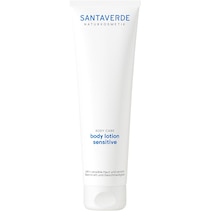
Santaverde
BODY CARE
BODY CARE
body lotion sensitive

€ 29.95 € 26.96
- € 22.46
- € 20.22
- € 29.95
- € 26.96
#10: Avoid friction and sweat
Sweat contains salts from the body. That’s why it also burns on freshly shaved areas. So only shave after exercising or in the evening. The same applies to your choice of clothing. Natural fibres are more breathable and make you sweat less. Wear loose-fitting trousers to avoid razor burn in the bikini area.
How to treat razor burn – first aid for stressed skin
Treatment after the fact: Razor burn – what can you do? This is a question many people ask themselves. Unfortunately, it is a very stubborn phenomenon that can occur despite all the care and optimisation of your shaving routine. To help your skin recover quickly next time, follow these first-aid measures:
-Cool irritated skin: ice cubes or cold water relieve the burning sensation and help against itching. Alternatively, use cool compresses or wraps with quark.
Do not scratch under any circumstances: even if you really want to. Never pick at razor burn with your fingernails. This can cause even more germs to enter and the already stressed skin will react to the rough treatment with even more redness.
Do not shave again: as long as the razor burn has not subsided, you should not let a blade touch your skin. This is because the pustules can burst open and worsen the inflammation process.
Use soothing care products: moisturising and skin-soothing after-shave care has a soothing and calming effect. If you don’t have any cream on hand: honey, coconut oil or chamomile tea can have an anti-inflammatory effect.
If the razor burn does not go away on its own within a few days or if your symptoms worsen, please see a doctor. If fluid-filled blisters suddenly appear, you should likewise seek professional help.
Razor burn FAQ:
Takeaway
As annoying as razor burn can be, you can easily avoid it by optimising your shaving routine. With the right techniques, products and tips, you can optimally care for your skin and make shaving less stressful for it. Make sure your blades are sharp, shave in the direction of hair growth and use soothing care products. You’ll soon be enjoying smooth and supple skin again, with no redness or itching.


